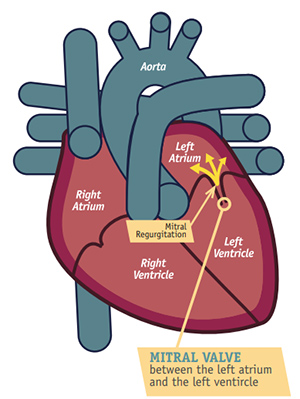Overview
The mitral valve separates the left top chamber (atrium) and the left bottom chamber (ventricle) of the heart. It has two very thin flaps called leaflets. Normally, when the leaflets open, blood pumps through. When the leaflets close, they prevent blood from flowing backward.
If your mitral valve does not work correctly, you may have mitral regurgitation, also called mitral valve insufficiency. This means that the valve does not close tightly, and some blood flows backward from the left ventricle to the left atrium. When this happens, your heart must work harder to pump that extra blood.

You may not even notice your heart has a small leak, but it can get worse over time. This is known as chronic mitral regurgitation. Larger leaks can cause the heart to weaken, and people usually begin to notice symptoms such as:
- Being short of breath
- Feeling fatigued or tired when doing their usual activities
- Holding on to fluid in their ankles and feet
The leaking can also occur suddenly (for example after a heart attack). This is called acute mitral regurgitation and is an emergency.
Your health care provider may be able to discover the regurgitation by listening to your chest with a stethoscope and hearing a sound called a murmur, which should prompt further testing.
- Last Edited 12/17/2020
- Medical Reviewer(s):
- Priya Kohli
- Anastasia L. Armbruster
- Martha Gulati
